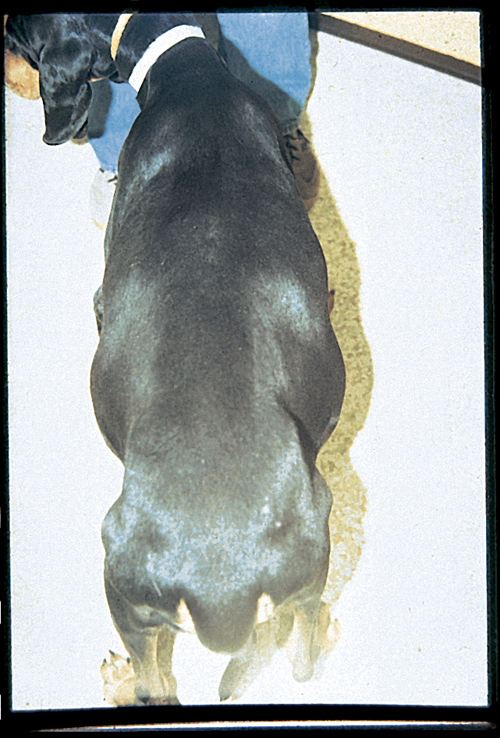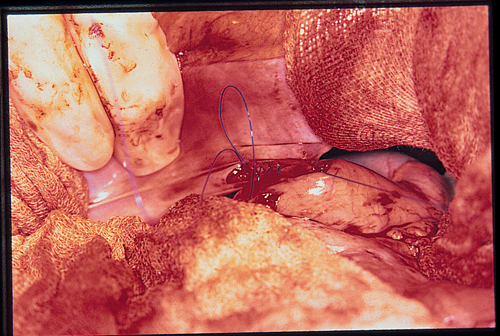Difference between revisions of "Small Animal Emergency and Critical Care Medicine Q&A 09"
Jump to navigation
Jump to search
Ggaitskell (talk | contribs) |
Ggaitskell (talk | contribs) |
||
| Line 48: | Line 48: | ||
desc none}} | desc none}} | ||
[[Category:Small Animal Emergency and Critical Care Medicine Q&A]] | [[Category:Small Animal Emergency and Critical Care Medicine Q&A]] | ||
| − | [[Category:To | + | [[Category:To Do - Manson]] |
Revision as of 08:00, 11 October 2011
| This question was provided by Manson Publishing as part of the OVAL Project. See more Small Animal Emergency and Critical Care Medicine Q&A. |
Your triage nurse alerts you that a three-year-old, male Coonhound (40 kg) with a few hours’ history of non-productive retching and pacing has entered the hospital. Primary survey reveals poor perfusion, rapid and irregular heart rate, and a tympanic, distended cranial abdomen. A lateral radiograph reveals gastric dilatation and volvulus.
| Question | Answer | Article | |
What are the pros and cons of the following surgical procedures for preventing gastric volvulus from recurring:
|
Circumcostal gastropexy.
Antral incisional gastropexy.
Tube gastropexy.
Midline abdominal closure gastropexy.
|
[[|Link to Article]] | |
| What vessels are most commonly torn during a gastric dilatation/volvulus episode, and where are these located? | Short gastric arteries and left epiploic artery along the greater curvature of the fundus. |
[[|Link to Article]] | |
| What surgical findings would indicate that a splenectomy is required? |
|
[[|Link to Article]] | |

